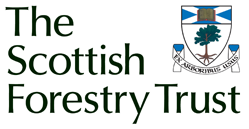Approaches to the retention of timber potential when restoring or enhancing PAWS sites
Carried out by: Scott McG Wilson
Summary Description:
Twenty-seven case-studies highlighted approaches including reduction of coniferous canopy density by regeneration thinning, respacing of natural hardwood/ mixed regeneration, enrichment planting, and tending of young hardwoods (brashing, pruning, thinning). Retained timber potential can be found on all ownership classes. Many successful examples involved “traditional estate” forestry and “continuous-cover” forestry techniques with regular monitoring and interventions. Improved woodfuel prices support earlier respacing/ thinning of hardwoods. Financial considerations, stand instability/ windthrow hazard and perceived biodiversity/ conservation constraints impede retention of timber potential on PAWS restoration/ enhancement sites in some cases, favouring clearfell/ restock working. However the predominant limiting factor is the shortage (and perceived decline) of the practical forestry skills and experience that are necessary to optimise timber potential. Effective enabling actions are likely to include simplification/ relaxation of PAWS restoration prescriptions, under-pinning of the forestry training infrastructure and encouragement of technical information exchange. The insights reported will inform the latter angle.
Timescale: 2011
SFT Funds Awarded: £2,500
Project Outcomes:
The full project report is available here and further information and details of the site reports can be obtained directly from the author Scott McG Wilson
